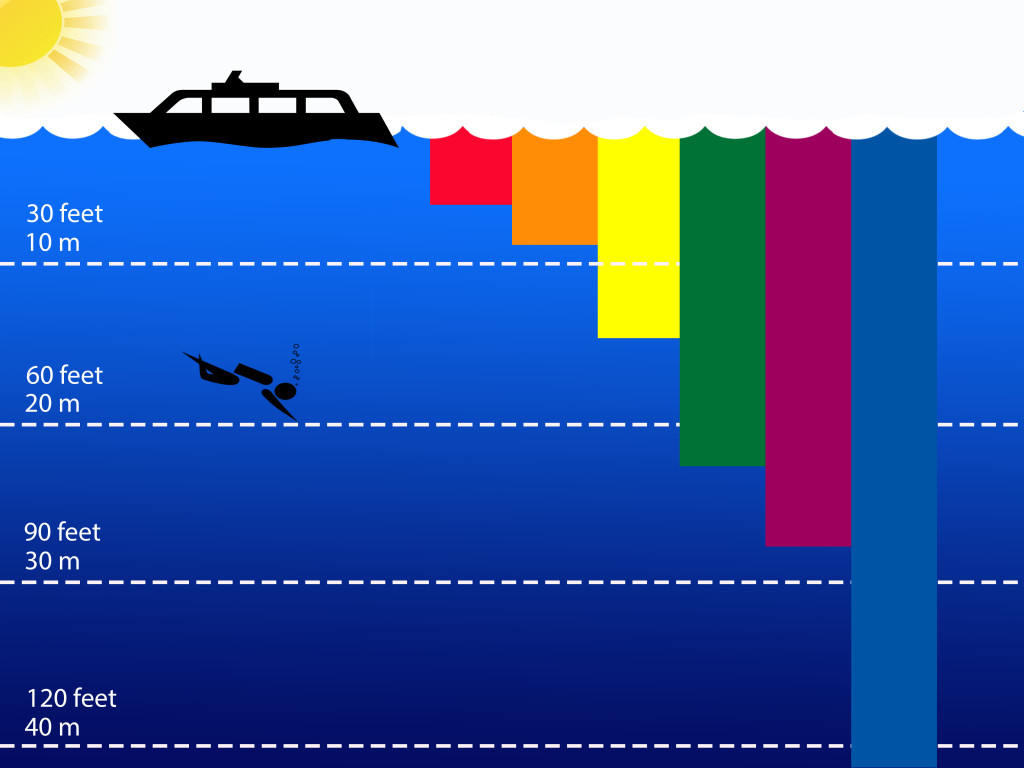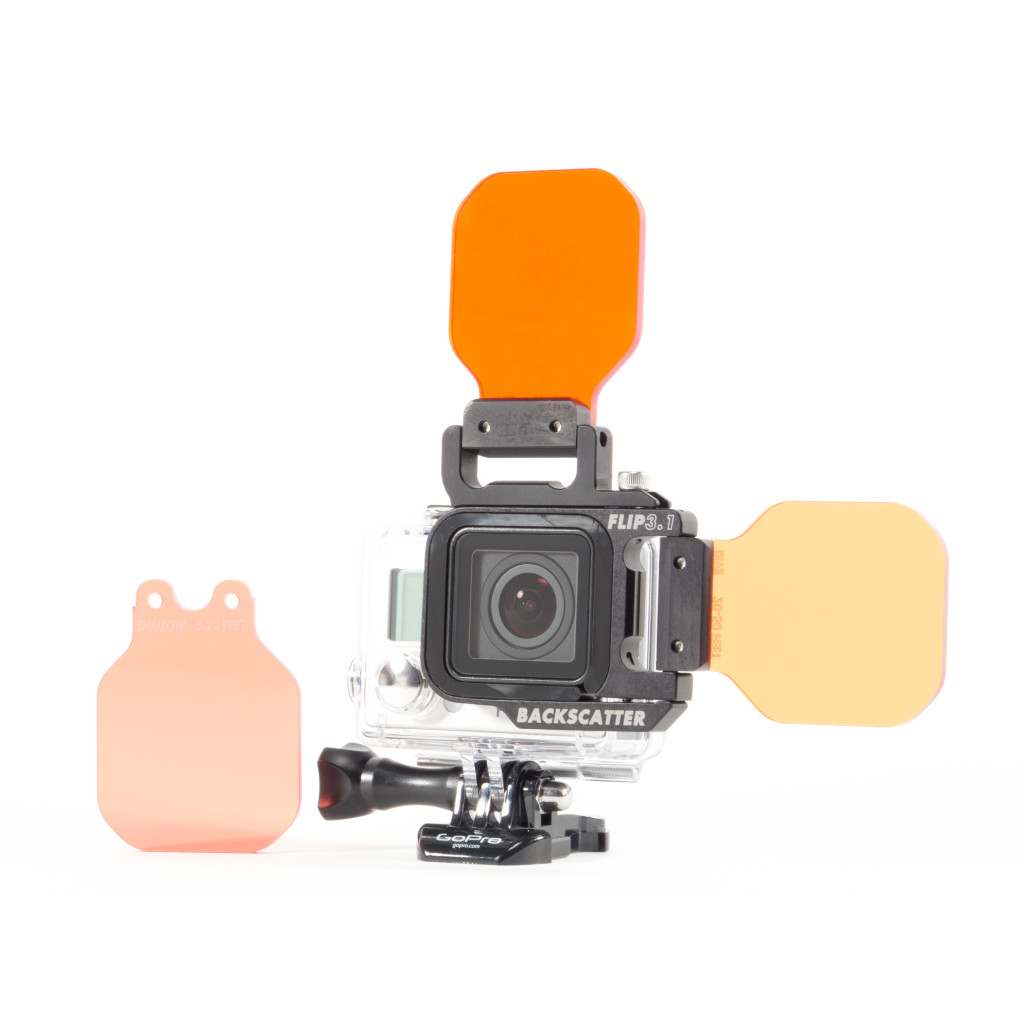With the GoPro and similar cameras becoming ubiquitous both on dry land and underwater, the volume and quality of photos and videos that divers are shooting has grown exponentially. With this uptick in amateur photography, more and more divers are becoming aware of some of the challenges that professional photographers and videographers have faced for years.
The color of light
One of the challenges of filming or taking pictures underwater is that as we descend through the water column, the water blocks light, making it generally darker as we go. But light isn’t blocked evenly across the spectrum, which poses an additional challenge.

Light consists of a range of colors, known as the color spectrum. Bright, white light consists of all colors, but as the water absorbs the light, these colors disappear one by one the deeper we go. Red is the first color to go, followed by orange, yellow, green, violet, and finally blue. This is why dive pictures so often have a blue tinge, and may lack colors all together.
There are two ways to fix this: bring light (as bright as possible) or bring a filter. By shining a bright light on a subject, we add back in all the colors of the spectrum, but since light is very directional, it’s not always practical for photography and videography, and is often quite expensive.
Filter for color
A less ideal, but more economical and convenient way to fix this problem is to bring a filter. Filters have been used since the dawn of photography to help manipulate the strength and color of light in a photo. When it comes to diving, a red or orange filter is an easy way to make your photos more life-like.
But there’s a catch: Because filters are made of a single color, they work best at a given depth or depth range. A very red filter, for example, made to compensate for severe loss of red light at depths of 50 feet or more, will give a red or sepia tinge to photos taken at a shallower depth because there’s more red light available there, which is then accentuated too much by the filter.
This wasn’t necessarily a problem in the days before dive computers, when the typical dive had a box profile, wherein divers would descend to a certain depth, stay there for the duration of their dive, and then ascend straight to the surface, making any required safety or deco stops along the way. But modern dive computers have made multi-level dives much easier, meaning a typical dive today might start at 60 feet, but the divers may only spend 15 minutes there before starting their ascent, making a low ascent with several minutes spent at various depths before finally surfacing, extending their total dive time to an hour or more. While their deepest depth was 60 feet, they might have spent the majority of their dive time at depths between 20 and 30 feet, so knowing which filter to bring can be challenging. Since it’s rarely possible to predict where the interesting subject is going to be, this is often a matter of guessing and hoping.

Enter the Flip 3.1
The Backscatter Flip 3.1 is a filter system for the GoPro camera range that seeks to eliminate this guesswork. It features a mount that goes over the lens of the housing and a number of filters for various depths, as well as an adapter that ensures that the system can be used on GoPro housings from the very first to the recent GoPro 4, including underwater housings. The mount allows you to have two filters mounted at any one time, and to switch between them, literally as easily as the flip of a switch.
With this system, you can bring a filter for the deeper as well as the shallower part of your dive, and can remove either one completely for the shallowest parts or your dive, as well as for any surface action you want to capture.
Up next: Hands-on with the Backscatter Flip 3.1

